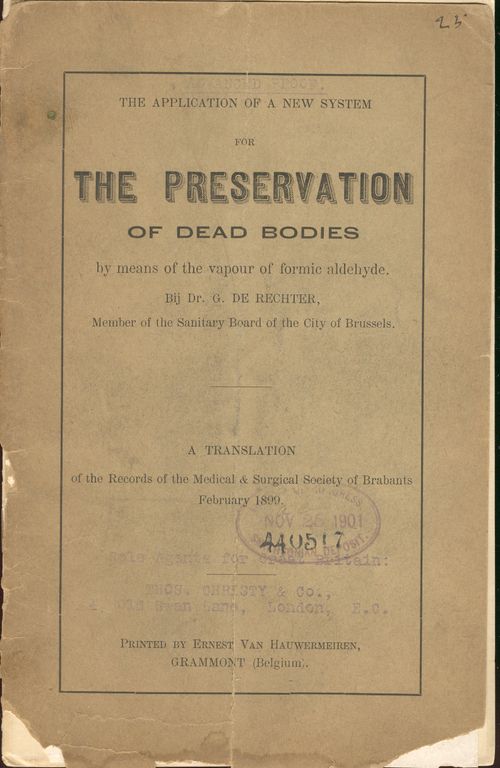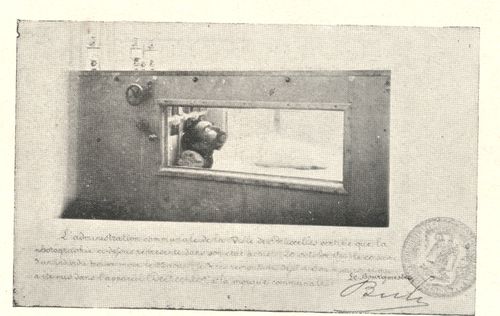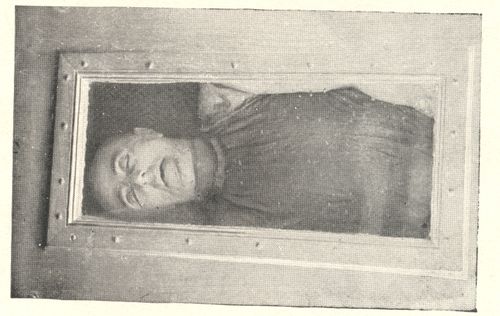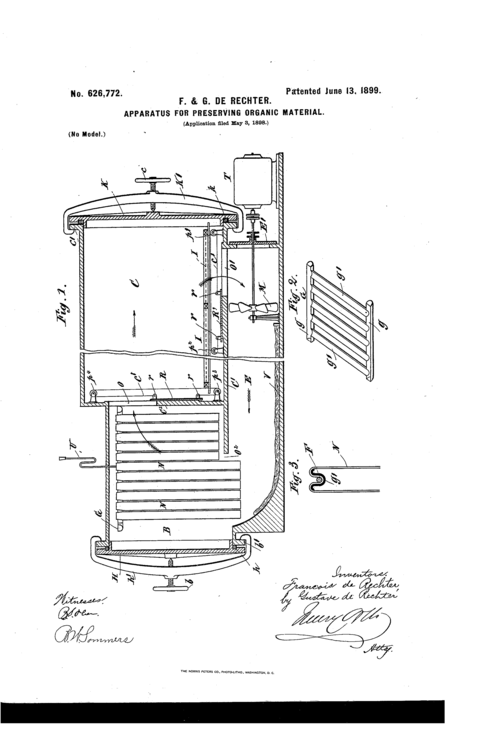JF Ptak Science Books Post 2332 (expanding an earlier post from 2009) Blog Bookstore
Gustave de Rechter, the author of this pamphlet (The Application of a New System for the Preservation of Dead Bodies, Grammont, Belgium, 1899) had, as you might guess, a very specific reason for keeping the dead from being entirely, decomposedly, dead. As the director of the School of Criminology and of Scientific Police of Belgium, Dr. de Rechter tried to find a way of preservation of bodies for forensic and legal purposes.
He followed in the footsteps of people like Alphonse Bertillon (France) and Hans Gross (Austria) in helping to establish a scientific basis for criminology in the late 19th century. In his case, the preservation of the dead would allow the bodies (of the murdered or suspiciously departed) to be re-examined at a much later date (at least months down the road) should the defense in a murder case challenge the original findings of the medical examiner.
As de Rechter points out, this was particularly true in the case of poisoning, where in 1899 the evidence would be all but dissipated
from the body following even a week of death—he maintains that his new method of preservation (via an incubated spray of formic aldehyde, or formaldehyde) would enable further inspection even months after death. De Rechter manages to forestall the inevitable, the great crumbling that awaits everything, everyone, at some point, the "distinguished thing" of Henry James' (last words), to return everything to the earth, to what Larry McMurtry (in Lonesome Dove) refers to as "nothing but a boneyard".
(The images here are from the pamphlet, with de Rechter showing the effects of his nasty spray on corpses and what they looked like after some months sleeping in their formaldehyde cocoons.)
From the de Rechter patent of 1899:
"The object of this invention is to overcome the difficulties and inconveniences above referred to by the provision of means whereby organic substances or bodies such as hereinbefore referred to may be indefinitely preserved without alteration either in their character or appearance, which may be exposed to atmospheric influences without danger of infection by destructive organisms, which may be freely handled, examined, or studied, and which when once properly treated for preservation will require no subsequent treatmen t. The importance of such means will be readily appreciated, especially Whenit is understood that the bulk of the body to be preserved does not in the least interfere with its indefinite preservation,while animal bodies can be so preserved without evisceration. We have thus succeeded in absolutely fixing not only animal and other bodies or parts thereof or their organs and other organisms, but also in permanently fixing the covering of the eutaneous envelop of bodies, as the hair, wool,feathers, or scales, without in the least altering either their normal condition or their appearance."
"Our process not only serves as a means of permanently fixing the tissues, but also as a means of disinfection, applicable also to any other substances."







Comments